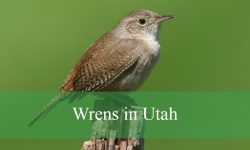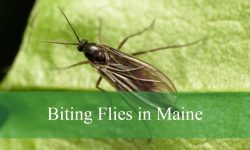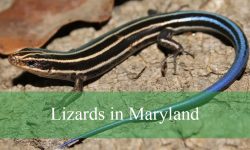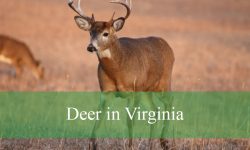Kentucky offers a diverse habitat that attracts a wide variety of raptors throughout the year. Among these impressive birds of prey, hawks in Kentucky are some of the most commonly observed and fascinating species. Whether soaring high above open fields or darting swiftly through wooded areas, these hawks play a vital role in the state’s ecosystems.
For birdwatchers and nature enthusiasts, identifying hawks in Kentucky can be both exciting and challenging due to the variety of species and their seasonal movements. This guide highlights 12 of the most notable hawks you’re likely to encounter in the region, complete with detailed descriptions and vivid pictures to help you recognize each one.
From the iconic Red-tailed Hawk to the elusive Northern Goshawk, understanding the features and behaviors of these raptors will enhance your birdwatching experience. Dive in to discover the rich diversity of hawks in Kentucky and learn how to spot them in their natural habitats.
Common Hawks Found in Kentucky
Red-tailed Hawk (Buteo jamaicensis)
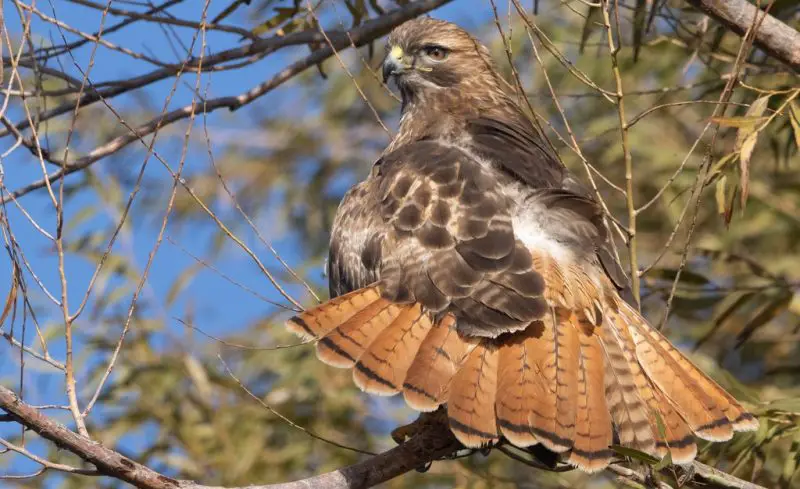
The Red-tailed Hawk is one of the most common and easily recognizable hawks in Kentucky. It is known for its distinctive reddish-brown tail, which is often visible when the bird is soaring or perched. Its broad, rounded wings and stocky body give it a powerful and commanding appearance. Adults typically have a pale underside with a dark belly band.
This hawk is quite large, with a wingspan ranging from 45 to 52 inches and a body length between 18 and 26 inches. Females tend to be slightly larger than males, which is common among birds of prey. Their strong talons and hooked beak make them effective hunters.
Red-tailed Hawks are versatile predators, often seen perched on roadside poles or soaring high above open fields, forests, and farmlands. Their diet mainly consists of small mammals such as rabbits, squirrels, and rodents, but they will also hunt birds and reptiles when available.
In Kentucky, the Red-tailed Hawk is widespread throughout the state, inhabiting a variety of environments including woodlands, grasslands, and urban areas. They are year-round residents but may be more noticeable during migration seasons when juveniles disperse.
Cooper’s Hawk (Accipiter cooperii)
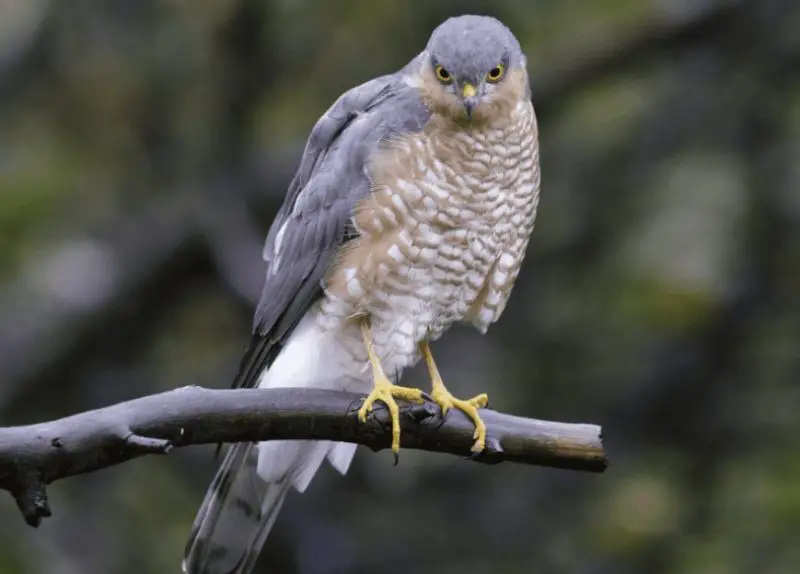
Cooper’s Hawk is a medium-sized hawk commonly found in Kentucky’s wooded areas. It has a sleek, agile body with rounded wings and a long tail that aids in maneuvering through dense forests. Its blue-gray back contrasts with reddish barring on the chest and underparts, helping to distinguish it from other hawks.
This hawk measures about 14 to 20 inches in length with a wingspan of 24 to 35 inches. Females are generally larger and bulkier than males. The sharp, curved beak and strong talons are adaptations for catching and killing prey efficiently.
Cooper’s Hawks are known for their quick, direct flight and their skill in chasing smaller birds through thick trees. They primarily hunt songbirds, which they ambush using stealth and speed. They may also feed on small mammals occasionally.
In Kentucky, Cooper’s Hawks thrive in deciduous and mixed forests, suburban neighborhoods, and parks. They breed in the state and are generally present year-round. Their preference for wooded habitats makes them a familiar sight in many parts of Kentucky.
Sharp-shinned Hawk (Accipiter striatus)
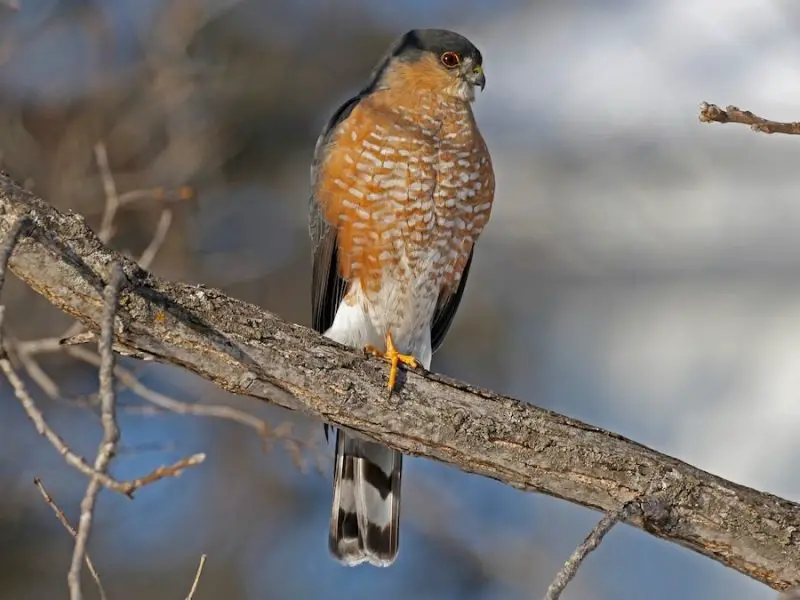
The Sharp-shinned Hawk is the smallest hawk species found in Kentucky. It resembles the Cooper’s Hawk but is more slender and has a shorter tail with a squared-off tip rather than a rounded one. The plumage includes a dark bluish-gray back and fine reddish barring on the chest.
Typically, Sharp-shinned Hawks measure about 9 to 13 inches in length with a wingspan of 17 to 24 inches. Their small size and narrow wings allow them to fly swiftly and with great agility through dense forest vegetation, where they hunt.
This species specializes in preying on small birds such as sparrows and finches, often capturing them in mid-flight or from dense cover. Sharp-shinned Hawks are secretive and fast, making them challenging to observe in the wild.
In Kentucky, they prefer mature forests but are also spotted during migration through a variety of habitats. They are found statewide, mostly during spring and fall migration, with some remaining to breed in wooded regions.
Broad-winged Hawk (Buteo platypterus)

The Broad-winged Hawk is a smaller member of the Buteo family that passes through Kentucky in large migratory flocks each fall. It is characterized by broad, rounded wings and a short, banded tail with distinctive white and dark stripes. Its overall coloration is brown above with pale underparts marked by fine streaks.
These hawks measure around 13 to 17 inches in length with a wingspan of approximately 31 to 39 inches. They are noticeably smaller than Red-tailed Hawks but share a similar body shape. Their compact size and wing shape allow them to soar efficiently during long migrations.
Broad-winged Hawks feed mainly on small mammals, amphibians, and insects, hunting mostly from perches or while soaring. Their migration is famous for forming large kettles, or groups, circling on thermal updrafts as they travel south.
In Kentucky, Broad-winged Hawks are most commonly seen during migration periods in spring and fall. They breed in northern forests but use Kentucky’s forests and river valleys as important stopover sites on their long journeys to and from their wintering grounds in Central and South America.
Northern Harrier (Circus hudsonius)
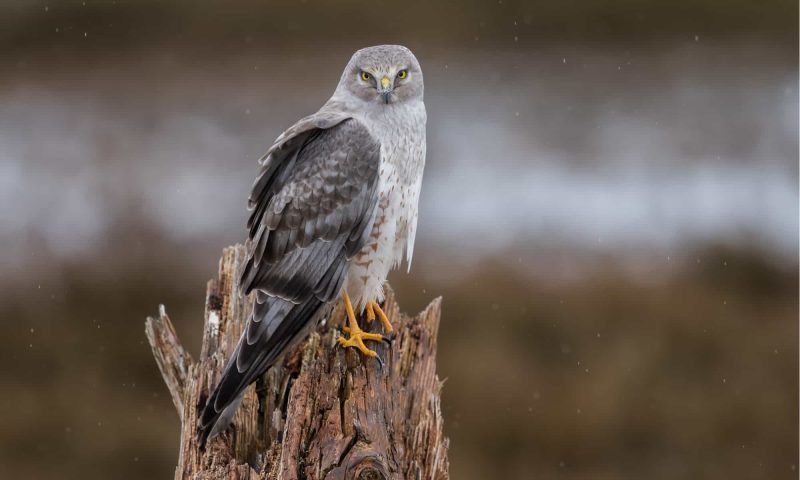
The Northern Harrier is a slender hawk often seen gliding low over fields, marshes, and wetlands in Kentucky. It is easily recognized by its white rump patch and its distinctive owl-like facial disk, which helps it locate prey by sound as well as sight. This unique feature sets it apart from most other hawks in the region.
Northern Harriers measure about 18 to 22 inches in length, with a wingspan between 40 and 46 inches. Males have grayish plumage, while females and juveniles appear brown. Their long wings and tail give them a graceful, buoyant flight pattern close to the ground.
These hawks primarily hunt small mammals, birds, and occasionally amphibians, often flying slowly and low while searching for prey. Their diet includes voles, mice, and small songbirds, which they surprise by silently gliding through dense vegetation.
In Kentucky, Northern Harriers prefer open habitats such as marshes, grasslands, and agricultural fields. They breed in northern regions but visit Kentucky mainly during migration and winter months, making seasonal appearances in suitable wetland areas.
Red-shouldered Hawk (Buteo lineatus)

The Red-shouldered Hawk is commonly found in Kentucky’s wooded areas, especially near rivers, swamps, and other wet habitats. It is easily identifiable by its reddish shoulders, black-and-white checkered wings, and barred tail. This hawk’s loud, rolling scream is a familiar sound in forested landscapes.
This medium-sized hawk typically measures 16 to 22 inches in length with a wingspan of 37 to 43 inches. Both sexes have similar plumage, featuring rusty red coloring on the chest and shoulders contrasted with black and white wing patterns.
Red-shouldered Hawks hunt mainly small mammals, amphibians, and reptiles, often from a perch or by soaring above the forest canopy. They are territorial and can be seen calling frequently during breeding season to defend their nesting area.
In Kentucky, they prefer mature woodlands near water sources, such as river bottoms and swampy areas. They are year-round residents, widely distributed throughout the state in suitable habitats.
Black Hawk (Common Black Hawk – Buteogallus anthracinus)
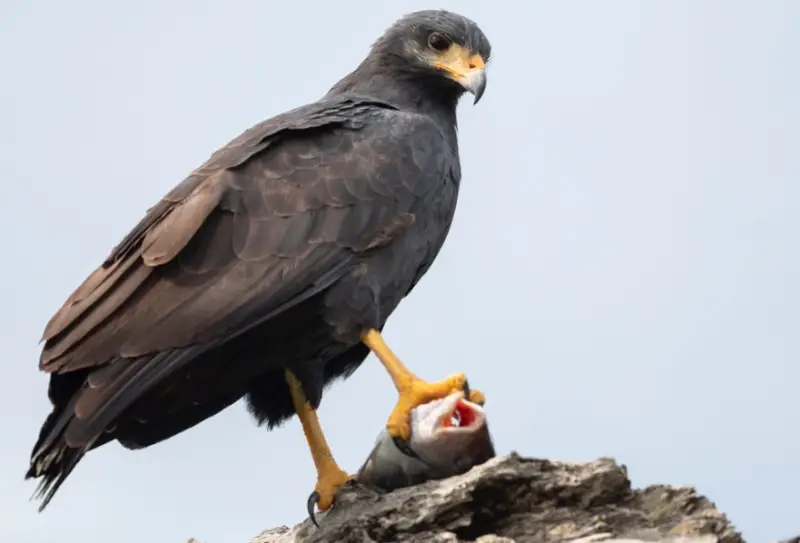
The Common Black Hawk is a large, dark-colored hawk rarely seen in Kentucky, mostly during migration or as a vagrant from southern regions. Its overall black plumage and broad wings give it a striking silhouette. This species is more common in the southwestern and southern United States.
Measuring about 18 to 22 inches in length with a wingspan of roughly 44 to 47 inches, the Black Hawk has broad wings and a short tail. It is a powerful bird, with strong talons adapted for catching prey in wet or riparian habitats.
Common Black Hawks feed mostly on reptiles, amphibians, and small mammals, often hunting near rivers and streams. They are usually seen soaring or perched in tall trees close to water, relying on their keen eyesight to spot prey.
Though rare in Kentucky, they have been occasionally recorded during spring or fall migration. When observed, sightings typically occur near river valleys or wet woodlands where suitable habitat exists.
Rough-legged Hawk (Buteo lagopus)
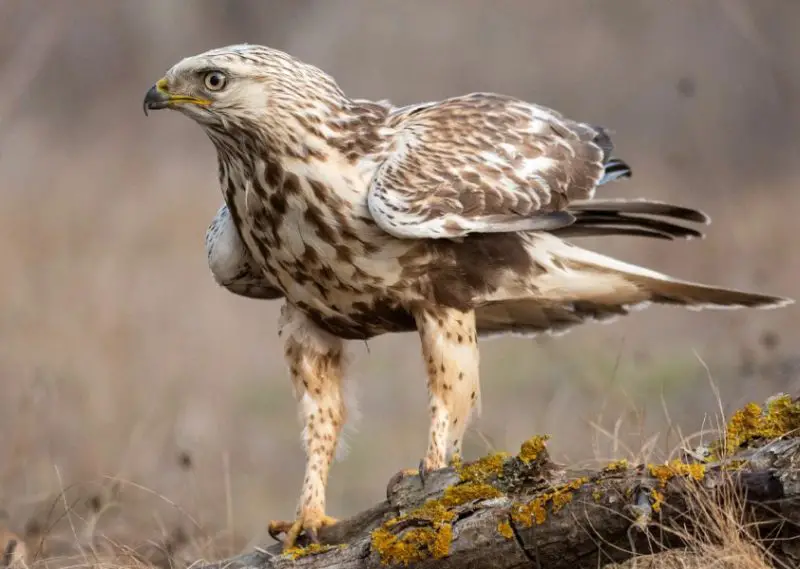
The Rough-legged Hawk is a winter visitor to Kentucky, migrating south from its Arctic breeding grounds. It is known for its feathered legs—an adaptation to cold climates—and its distinctive belly and wing patterns that include dark patches on the underwings and tail bands.
This medium to large hawk measures 19 to 26 inches long with a wingspan of 52 to 60 inches. Its plumage varies from light morphs with creamy white underparts to darker morphs, but all have the characteristic feathered legs and a somewhat bulky appearance.
Rough-legged Hawks hunt primarily in open fields, marshes, and prairies, feeding on rodents and small mammals. They often hover while hunting or soar slowly while scanning the ground for prey.
In Kentucky, they are typically found during the colder months in open agricultural areas and wetlands. Their winter presence is sporadic but reliable, especially in northern parts of the state where open habitats provide good hunting grounds.
Less Common or Migratory Hawk Species
Swainson’s Hawk (Buteo swainsoni)

Swainson’s Hawk primarily inhabits the western regions of the United States, favoring open grasslands, prairies, and agricultural areas. It is a medium-sized hawk with long, narrow wings and a relatively slim body. Its plumage varies but often includes a dark belly band and a pale face with a distinctive dark “moustache” mark.
This hawk measures about 18 to 22 inches in length, with a wingspan ranging from 47 to 56 inches. The long wings and streamlined build make it an efficient soaring hunter, often seen gliding high in the sky during migration.
Swainson’s Hawks feed mainly on insects and small mammals, particularly grasshoppers and rodents. During migration, they travel in large flocks, covering long distances from their breeding grounds in the west to wintering areas in Central and South America.
In Kentucky, Swainson’s Hawk is a rare visitor, mostly appearing as an accidental migrant during spring and fall. Sightings are uncommon but notable due to their western origin and unique migration behavior.
Zone-tailed Hawk (Buteo albonotatus)
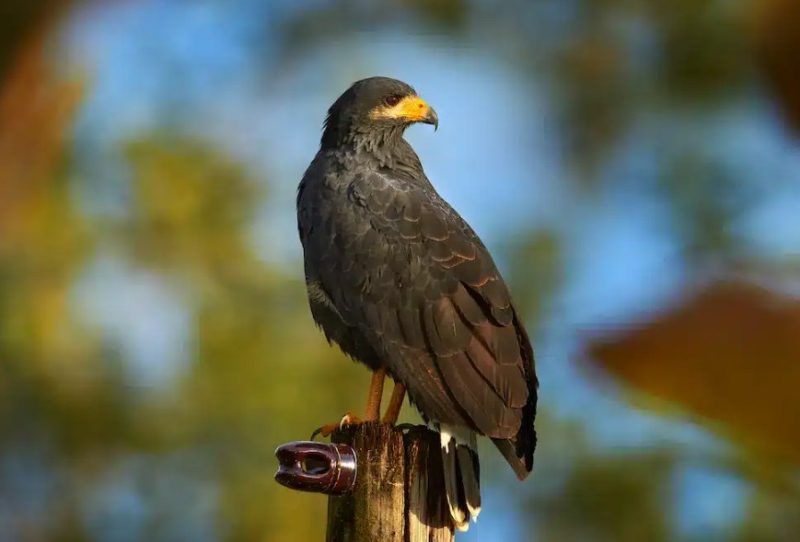
The Zone-tailed Hawk is a rare and elusive species mostly found in the southern United States and Mexico. It is a medium-sized hawk with dark plumage and a distinctive pattern on its tail, which features narrow white bands or “zones” that give the bird its name.
This hawk typically measures 18 to 22 inches long with a wingspan of about 44 to 50 inches. Its dark coloration and soaring flight pattern often lead it to be mistaken for a turkey vulture, which it mimics to approach prey more easily.
Zone-tailed Hawks hunt small mammals, reptiles, and birds, often using stealth and surprise. They prefer rugged terrain and wooded canyons but may also be seen soaring over open landscapes in their range.
In Kentucky, Zone-tailed Hawks are extremely rare and generally only observed during migration when individuals stray far from their usual southern habitats. Such sightings are notable and attract birdwatchers due to the species’ scarcity in the region.
Golden Eagle (Aquila chrysaetos)

The Golden Eagle is not technically a hawk but is a large and powerful bird of prey belonging to the eagle family. It is one of North America’s largest raptors, known for its impressive wingspan and striking golden-brown plumage on the back of the head and neck.
Adult Golden Eagles have a wingspan ranging from 71 to 90 inches and a body length of about 26 to 40 inches. Their broad wings and strong build allow them to hunt large mammals and birds, often soaring at high altitudes for extended periods.
Golden Eagles primarily feed on mammals such as rabbits, squirrels, and even larger prey like foxes. They are solitary hunters and use their keen eyesight and powerful talons to capture prey on the ground or in flight.
In Kentucky, Golden Eagles are very rare and mostly appear during the winter months or migration. When observed, they tend to be found in open fields or mountainous areas where hunting opportunities are optimal.
Northern Goshawk (Accipiter gentilis)
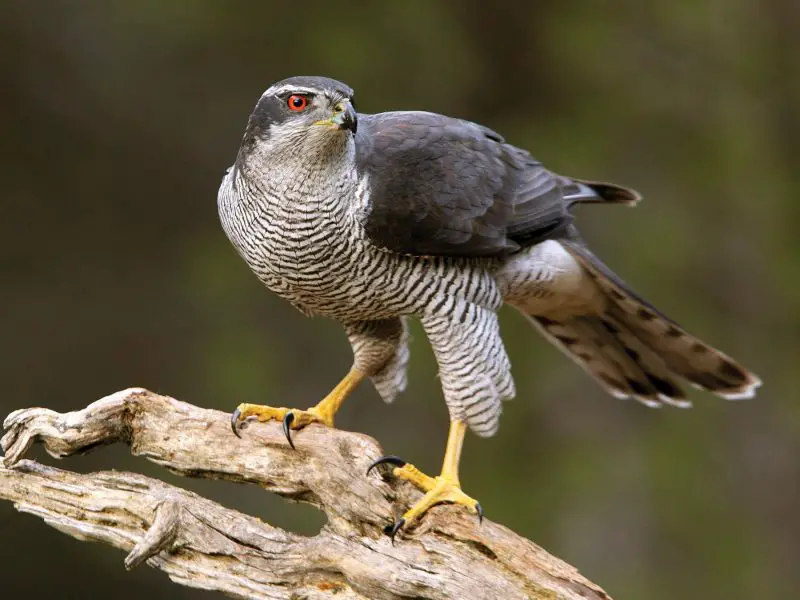
The Northern Goshawk is a large and robust hawk closely related to Cooper’s Hawk and Sharp-shinned Hawk. It has broad wings and a long tail, which enable agile flight through dense forests. Its plumage is mainly slate gray above with fine barring on the chest and underparts.
Typically, Northern Goshawks measure 20 to 26 inches in length with a wingspan between 39 and 47 inches. Females are notably larger than males, exhibiting the common raptor size dimorphism. Their powerful build supports hunting larger birds and mammals.
These hawks are skilled predators that inhabit mature, dense woodlands. They hunt birds and mammals by stealth and speed, often chasing prey through thick forest cover. They are known for their fierce territorial behavior.
In Kentucky, Northern Goshawks are uncommon but may appear occasionally, especially in winter when they move south from their northern breeding grounds. Their sightings are generally linked to heavily forested areas in the state.
Best Times and Places to See Hawks in Kentucky
Kentucky offers excellent opportunities to observe a variety of hawk species throughout the year, but certain times and locations stand out for the best viewing experiences. The peak period for spotting many hawks in Kentucky is during the fall migration, typically from September to November. During this time, large numbers of Broad-winged Hawks and other migratory species pass through the state, often gathering in thermal updrafts and soaring together in impressive kettles.
In terms of locations, open fields, farmlands, and river valleys provide ideal hunting grounds and vantage points for hawk watchers. The Kentucky River Palisades and the areas surrounding Lake Cumberland are known hotspots where hawks, including Red-tailed Hawks and Cooper’s Hawks, are frequently seen. Additionally, forest edges and wooded ridges throughout the state serve as important habitats, especially for species like the Red-shouldered Hawk and Northern Goshawk.
For the best chance to see these raptors in action, early mornings and late afternoons are optimal, when hawks are most active hunting or migrating. Bringing binoculars and visiting well-known birding spots during migration seasons will greatly increase your chances of witnessing the stunning diversity of hawks in Kentucky.


